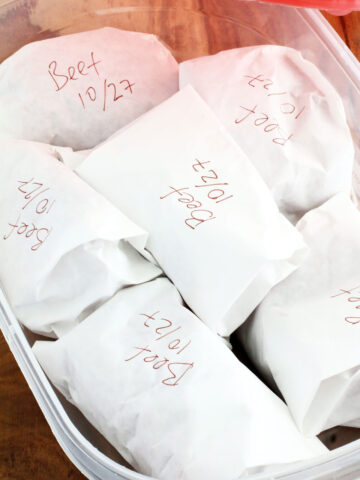Raising hens is a rewarding experience, but it comes with its unique challenges and responsibilities. One of these is managing a broody hen, which is a hen that has decided to hatch her eggs. This is a natural process, but it requires specific care and attention from the chicken keeper.

A brooding hen (or broody hen) will sit on her eggs for about three weeks, rarely leaving the nest. She will become very protective of her eggs and might even become aggressive if disturbed. Understanding a brooding hen's behavior is important to ensure the health and safety of both the hen and her future chicks.
In this article, I will teach you everything you need to know about a broody hen. I'll discuss the signs of a brooding hen, how to care for them, and what to expect during this period.
This knowledge will help you provide the best possible care for your brooding hen and her chicks. So let's get started!
Table of Contents
What Is a Broody Hen?
A broody hen is essentially a mother hen in the making. She's a chicken with a strong, natural desire to lay, incubate eggs, and raise chicks. A surge in certain hormones triggers this behavior and can occur in almost any breed of hen, although some are more prone to it than others.
When a hen becomes broody, she will sit on her clutch of eggs for long periods, only leaving briefly to eat, drink, and bathe. She'll also become more defensive and may peck if you try to disturb her or her eggs. This is all part of her maternal instincts kicking in to protect her future offspring.
If you're raising hens for egg production, broodiness can disrupt this as the hen will stop laying new eggs. However, if you're interested in hatching and raising chicks, a broody hen can be a valuable asset.
Understanding and managing broodiness is an important part of chicken-keeping. It's all about knowing your hens, recognizing the signs, and making the best decisions for your flock.
Signs Of a Brooding Hen
So, you have a flock of chickens, but how do you find out if you have a broody one?
When a hen is ready to hatch eggs, she enters a phase called brooding. Recognizing the signs of a brooding hen is crucial for chicken keep, especially if you're planning to expand your flock.
The most common sign is when a hen refuses to leave her nest. Even if you remove her, she'll return immediately. She might also puff up her feathers and make growling noises to protect her eggs. This is a clear sign of a brooding hen.
Another sign is a change in her eating and drinking habits. A brooding hen will eat and drink less than usual. She might also stop laying eggs, as her focus shifts to hatching and raising chicks.
You'll also notice a change in her physical appearance. The feathers on her chest may thin out, and her belly may feel warmer than usual. This is because hens raise their body temperature to incubate their eggs.
How to Identify a Broody Hen
A broody hen has a strong, natural desire to hatch eggs. Recognizing a broody hen can be a bit tricky, but with some knowledge and attention, you can easily identify one.
The most common sign is when a hen stays in the nest box for extended periods, even overnight. She may also puff up her feathers, growl, or peck when you approach. This is her way of protecting her eggs.
Another sign is if the hen frequently plucks her chest feathers. This is to create a warm, bare skin spot for the eggs. You may also notice a change in her droppings. They tend to be larger and less frequent.
Lastly, a broody hen may stop laying new eggs. If you notice a drop in egg production, it could be a sign of broodiness.
How to Facilitate Egg Hatching From a Broody Hen
Hatching eggs from a broody hen is an exciting part of raising chickens. The first step is to ensure your hen is genuinely broody, meaning she's ready to sit on her eggs until they hatch. She will be protective, pluck her chest feathers, and spend most of her time on the nest.
Next, provide her with a safe, quiet, and comfortable nesting box. It should be large enough for her to sit comfortably and have easy access to food and water.
In order to have a successful hatch, you need to move the broody chicken away from the flock because the longer she will be sitting in the nesting boxes, the more attached to that location she gets.
So, it’s so much easier to move the broody chicken to her permanent place as soon as you notice she’s broody.
I use a small rectangular animal feeder pan. Spread out hay, straws, or softwood chips inside the pan to make the nest comfortable to sit in.
Then I take about 15 fresh eggs from the nesting boxes but remember they cannot be washed or refrigerated. Next, I place them into a prepared nest and set the broody hen on the eggs.
How to Care for Eggs
If you don’t have that many freshly laid eggs in one day. Then mark as many eggs as you placed on day one, day two, or day three.
I don't recommend collecting the eggs for longer than that because when the eggs start hatching and the first chicks start growing, they do not want to stay in the box with the mama hen, then she will leave the nest to be with her chicks, leaving the rest of the eggs behind. The eggs will become cold and they will no longer hatch.
Finally, I place the box with the broody hen and eggs on the other side of the shed, where we collect eggs from the chicken coop and where we store all the crops and grains for the animals.
That way other chickens will not have any access to the broody hen and will not be adding newly laid eggs.
What to Expect from a Broody Hen?
It will take about 20 to 25 days for the first placed eggs to hatch. Sometimes the eggs need a little help to hatch.
Eggshells from home-raised chickens (especially if you give them oyster shells supplements) are much thicker and harder to hatch.

So, if you notice an egg has been cracked for multiple days, it's best to just crack it open and help the chick escape from it.
The crack is usually where the beak is, so you will hear the chick chirping. I’ve learned that from my own experience.
I noticed that one egg was not making any progress in hatching for a few days, so I decided to help by separating the shell and found that the chick inside was already dead.
Caring for the Broody Hen
Caring for a brooding hen requires patience, understanding, and a bit of know-how. First, it's essential to provide a safe, comfortable space for your hen. This could be a separate nesting box or a quiet corner of the coop. Ensure it's warm, dry, and free from potential predators.
Next, pay attention to her diet. A brooding hen needs more nutrients than usual, so consider providing a high-protein feed. Also, ensure she has access to clean, fresh water at all times.
Regularly check on your brooding hen without disturbing her too much. Look out for signs of stress or illness. If she seems lethargic or uninterested in food, consult a vet immediately
Some very dedicated broody hens will not get off their nests for multiple days in a row. Then try taking her off the nest so she can eat, drink, poop, maybe take a quick dust bath, and then quickly returns back to the nest of her own
When she goes out for breaks, have her eat with the rest of the chickens and the rooster. It is super important for the rest of the flock not to forget about her existence and then treat her like a newcomer on her return.
Broody Hen Hatching Eggs
Twenty-two days after a broody hen was sitting on the eggs, the very first egg hatched. Look how adorable this black baby chick is!

Remember, every hen is unique. What works for one might not work for another. It's all about understanding your hen and meeting her needs. So, follow these steps, and you'll be well on your way to successfully caring for your brooding hen.
Lastly, if you don't want chicks, but your hen goes broody, there are ways to discourage this behavior. You can regularly remove the eggs, or use a technique called "broody breaking" which involves placing her in a wire cage with no bedding for a few days.
PIN IT!





Leave a Reply